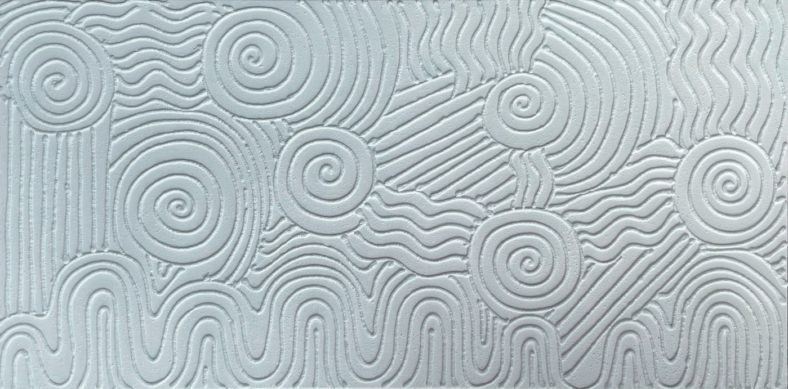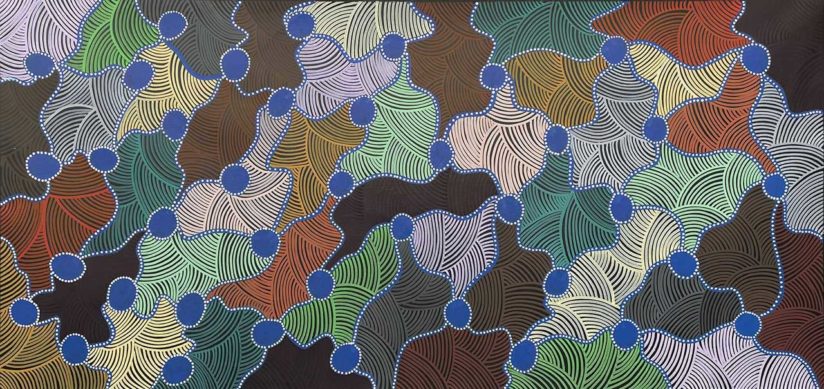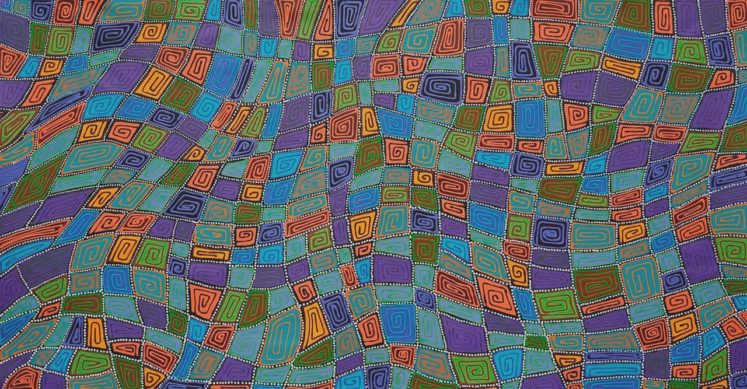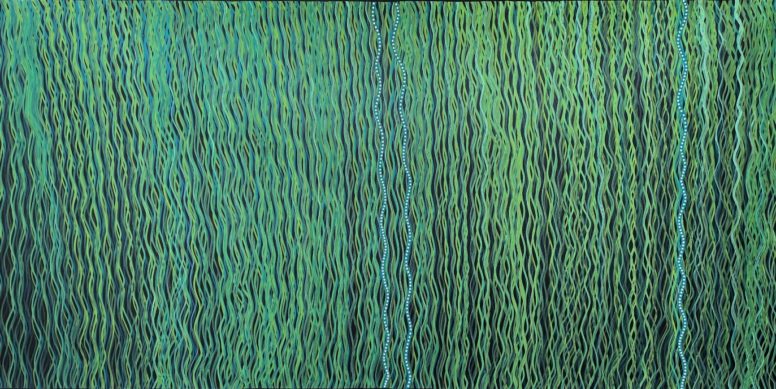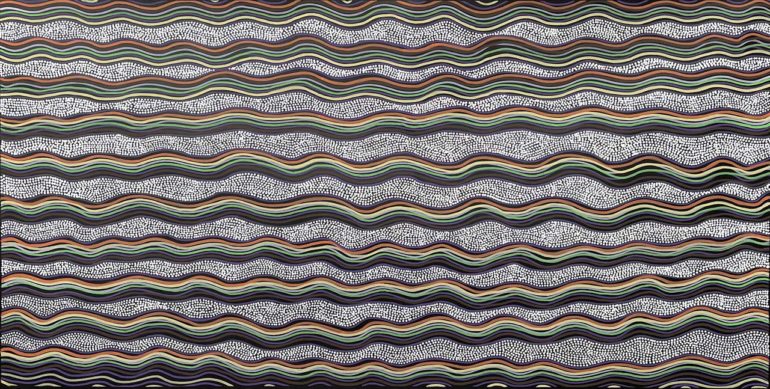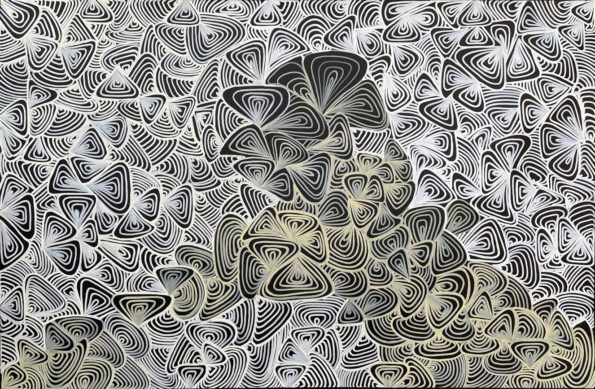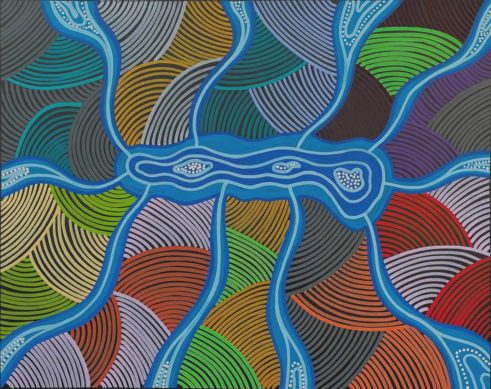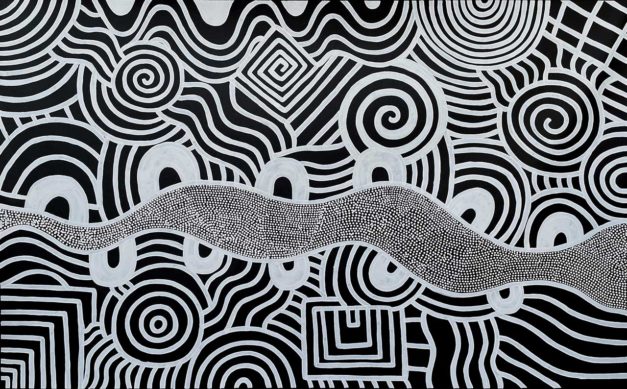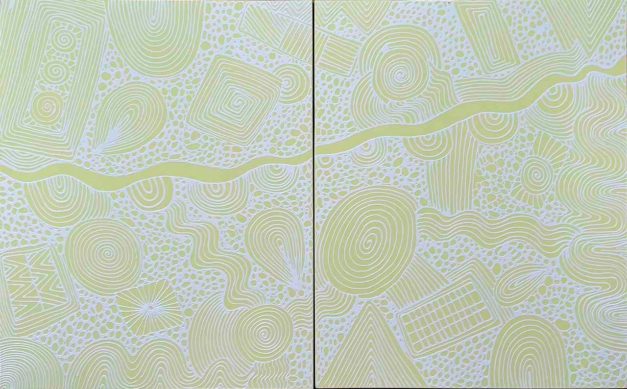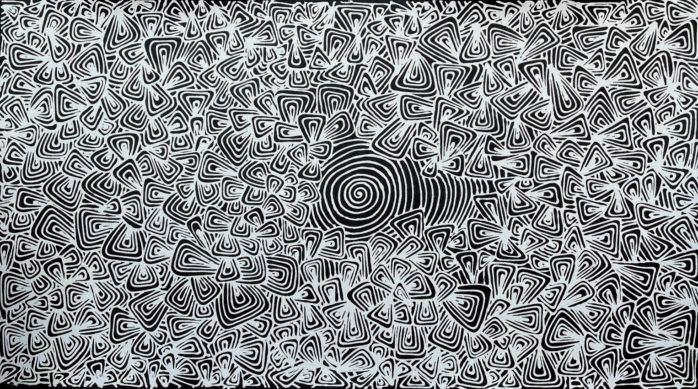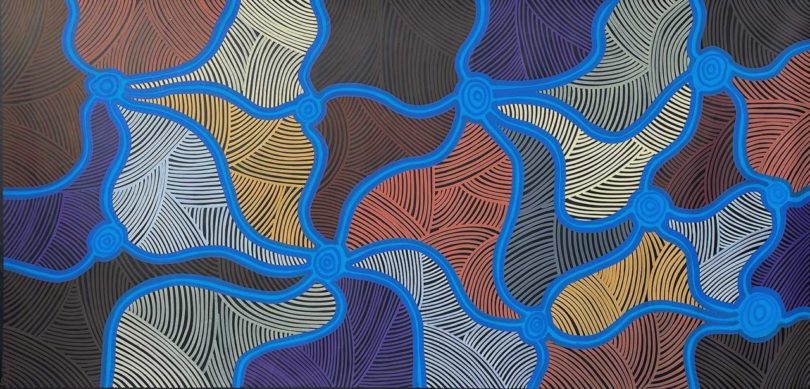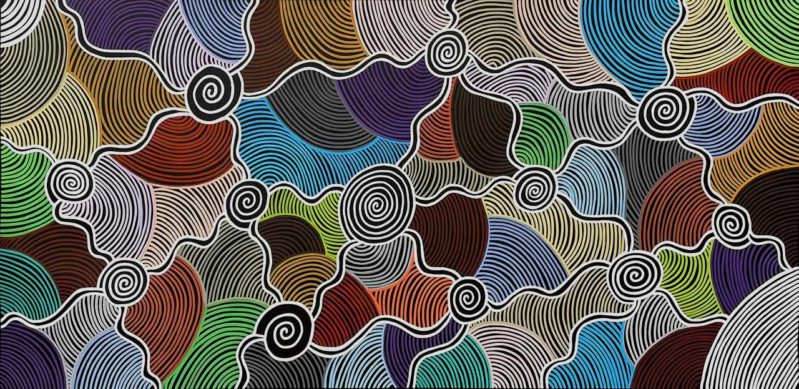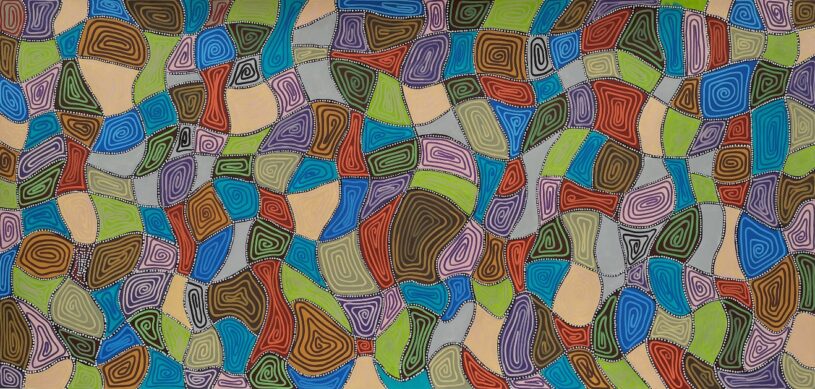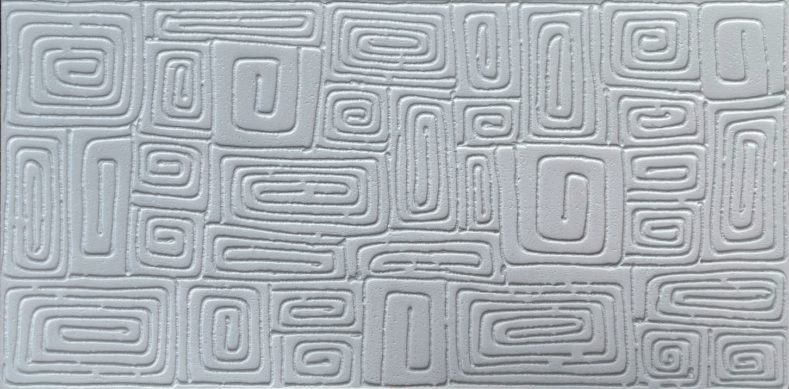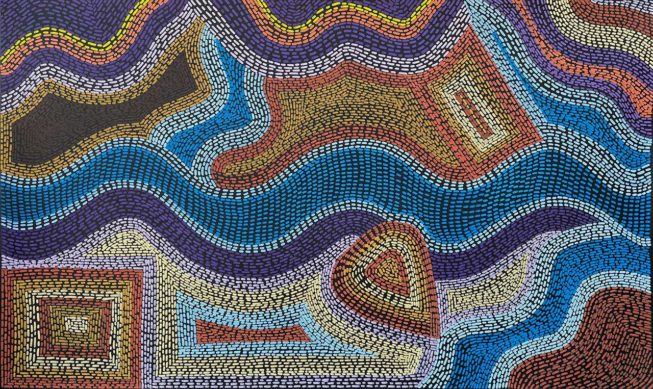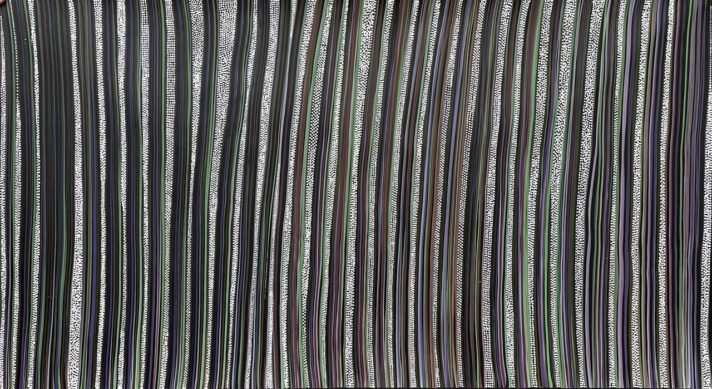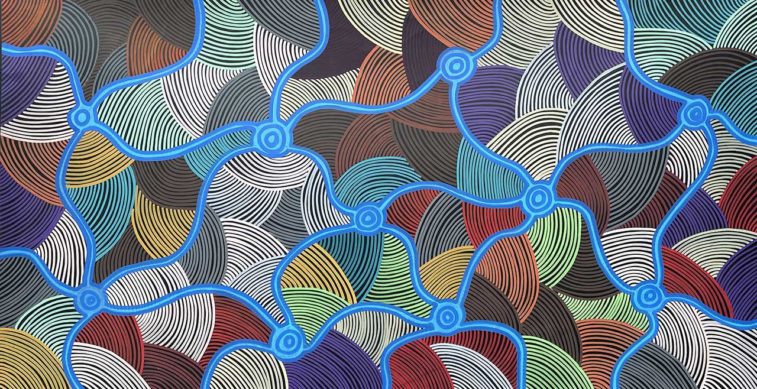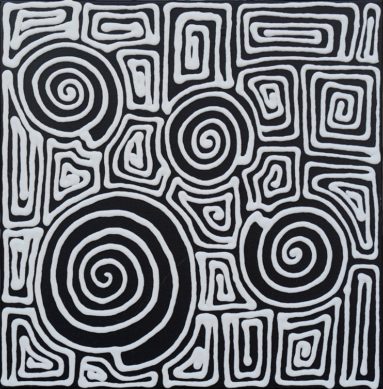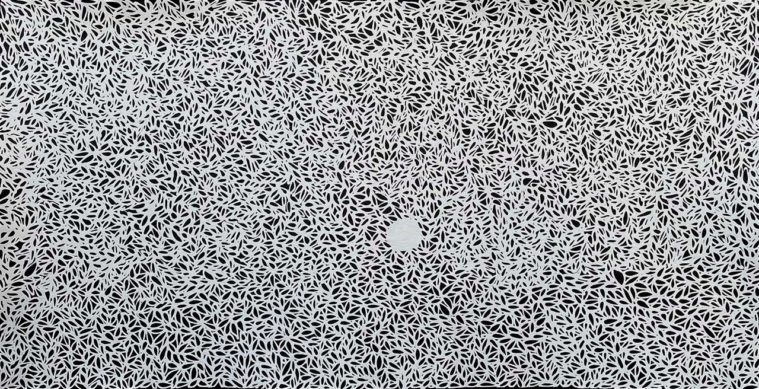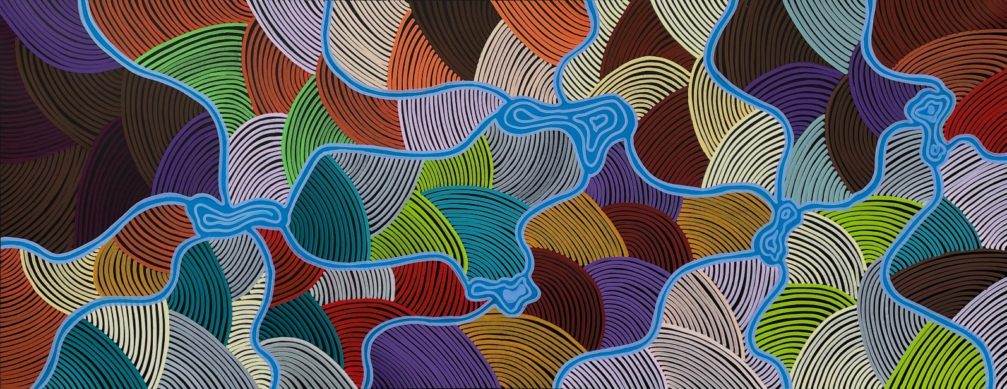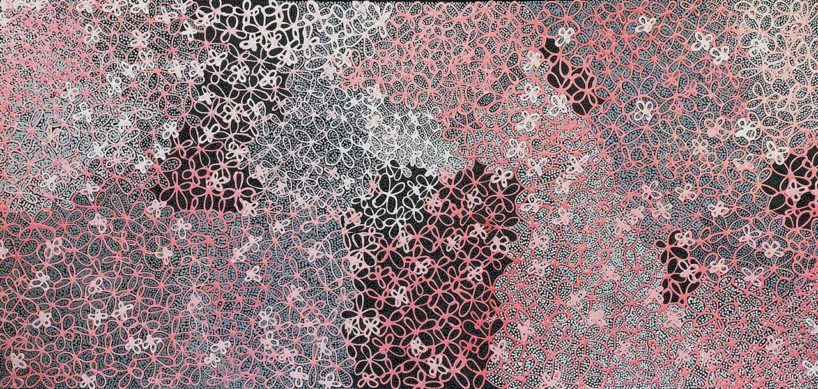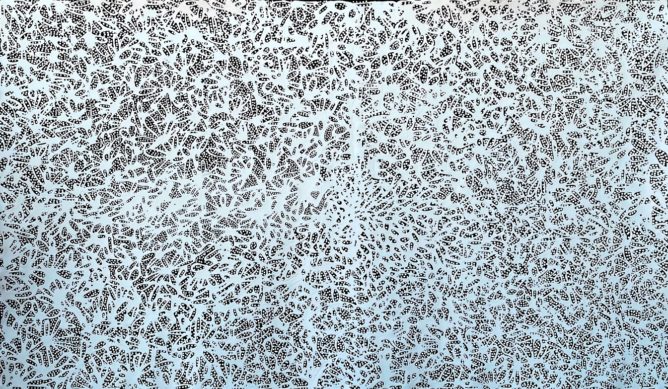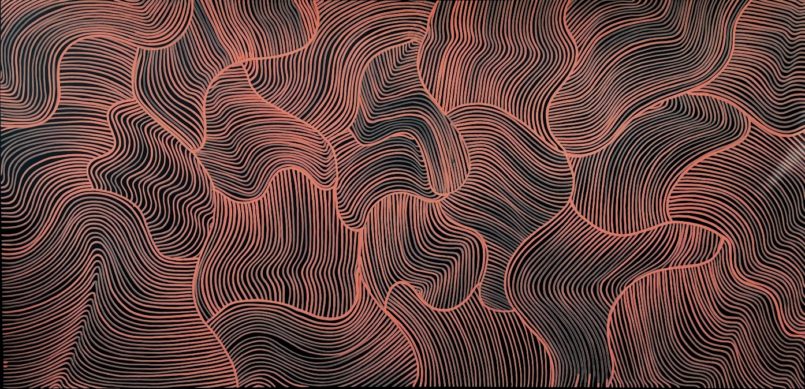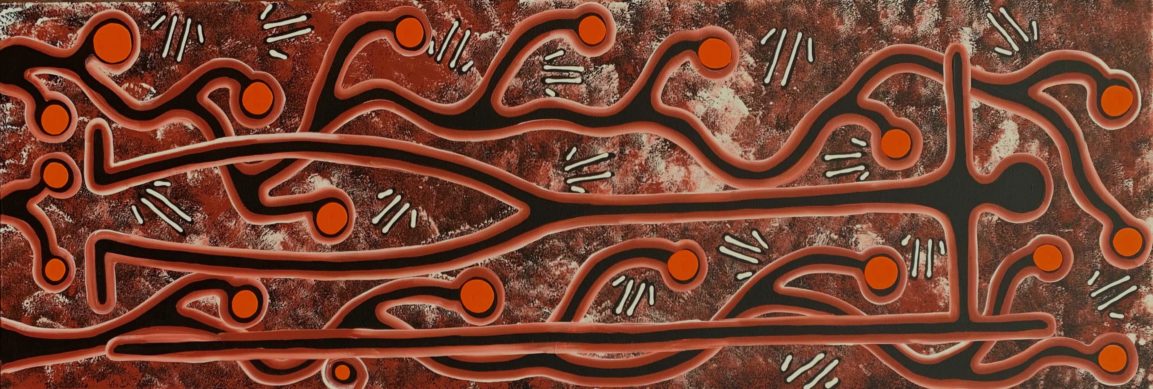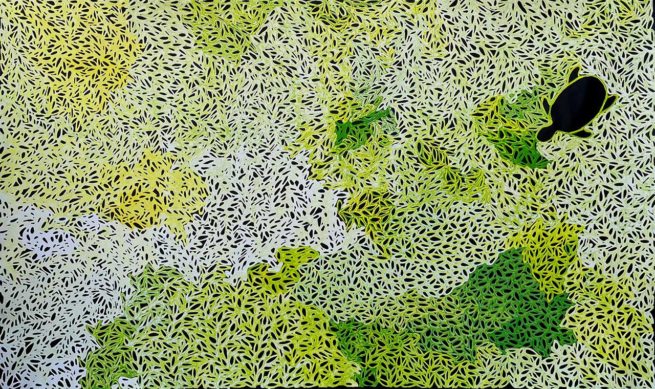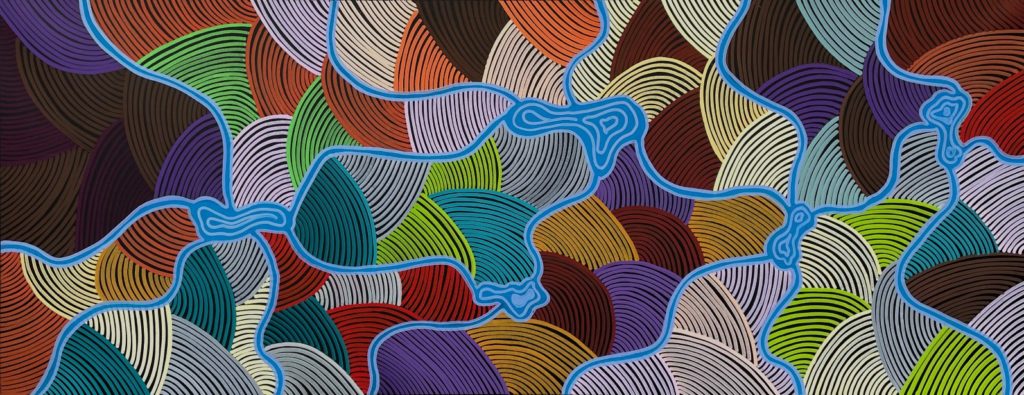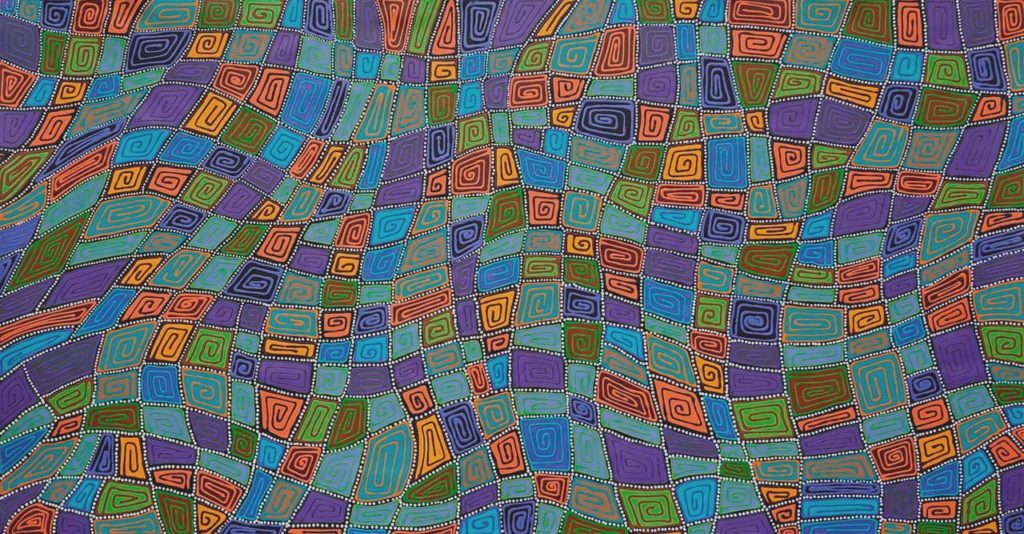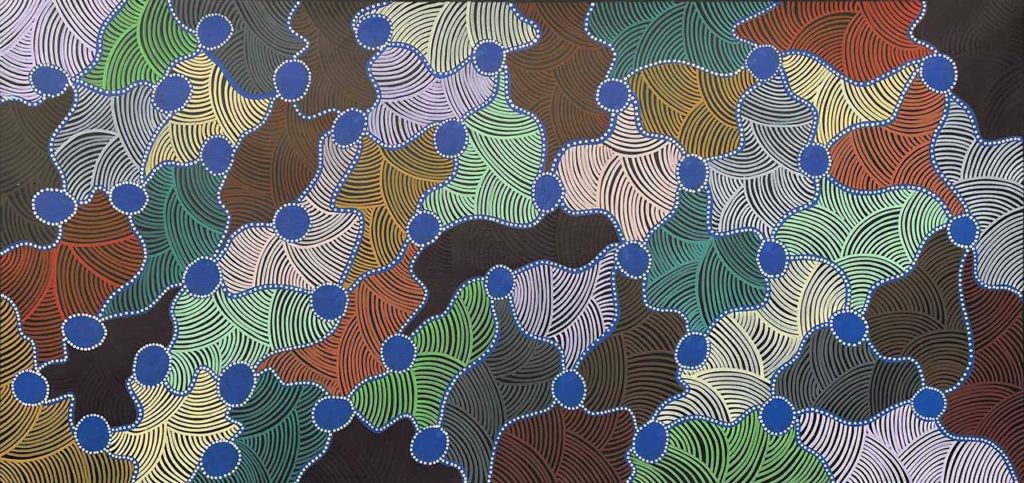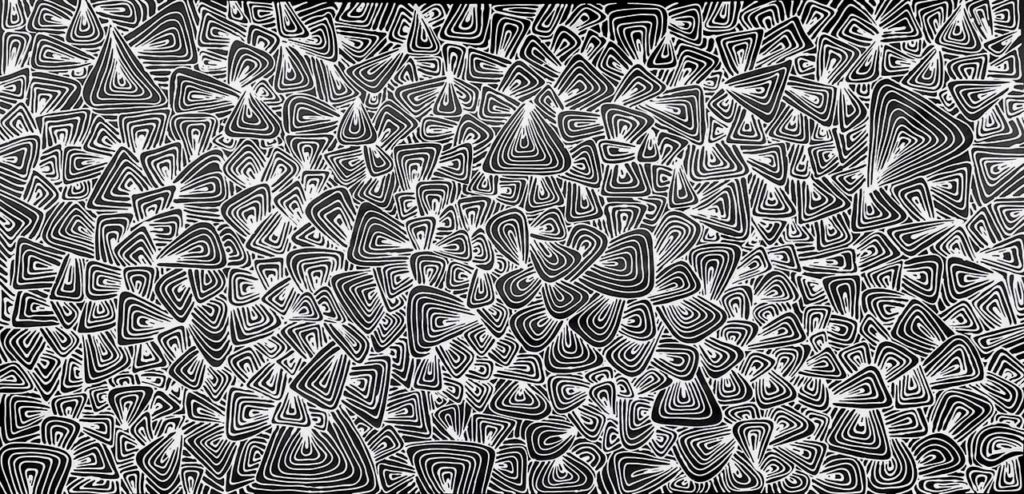Yondee Shane Hansen - Derbarl Yerrigan
Gallery 2
15 October 2021 - 28 January 2022
Recent paintings by Whadjuk Ballardong artist Yondee Shane Hansen focus on traditional songlines and walking paths along the waterways associated with Derbarl Yerrigan, the Swan River on the coastal plains around Perth. His paintings show the interconnected places of the Swan River and the large coastal lakes from Joondalup and urban Perth to the Beeliar Wetlands. The rivers of Perth are woven into the Dreaming stories of the local Noongar Aboriginal people. Yondee Shane Hansen says that the river links the freshwater people of the inland with the saltwater people of the coast.
The Dingo Dreaming track connects up with these groups and follows the contours of the river. The Wargyl is the water spirit that has its place in this Country and Yondee refers to ‘swimming with the Wargyl’ along the river course. Elders have also described that it is the place of the fresh water turtle, which was important for medicine. The name Derbarl Yerrigan does not literally translate as Swan River, which is named Narlak (Swan) Beeliar (River). Derbarl Yerrigan is also understood to refer to fresh water or brackish water Turtle Dreaming along the river.
Yondee’s paintings also include images of Gnamma holes, where Aboriginal people harvested water run-off from rock surfaces to collect in small wells, which were covered and protected. The paintings will be on display at Japingka Gallery from 15 October until 28 January 2022.
View: Yondee Shane Hansen – Artist Bio & Artwork
Exhibition Walk Through
David Wroth from Japingka Gallery talks about some of the works from Yondee Shane Hansen’s first Australian solo exhibition.
It’s a great thrill for Japingka Gallery to be hosting the first solo exhibition in Australia by local Whadjuk Ballardong man, Yondee Shane Hansen. He has been looking at the cultural traditions of Noongar people around the river and wetlands on the coastal strip of Western Australia.
The exhibition title Derbarl Yerrigan refers to the Swan River, and the artist has an interesting approach to representing that story. He’s looking at the river and the chain of wetlands and lakes that surround the Swan River. He’s also considering the songlines that follow alongside those water sites as part of Noongar culture. The painting that we’re standing in front of is a diptych, it’s a very softly coloured work. The background is a pale yellow-green colour.
The artist has made the drawing for this painting using thick white paint. The design itself stands out from the surface of the canvas. The paint is not just thickly applied, it’s as though it’s been poured onto the painting. The central image is of the Swan River, and there are other images of water sites relating to the lakes spreading out on the coastal plain. These are all the wetlands that extend from Lake Gnangara in the Wanneroo Wetlands near Joondalup all the way south to the Beeliar Wetlands. This painting is unusual in the choice of colour. Yondee often moves between using two contrasting colours. He will paint white on white or black on white. In this case there is very soft green and white. This is a work that stands out from many of the other paintings in the exhibition, which are more influenced by the colours of the seasons and display a stronger colour palette.

This is a smaller painting on the same subject of the wetlands around Derbarl Yerrigan. In this painting the artist shows us the various wetlands, swamps and lakes. These are all connected through underground water systems, which is how the coastal lake system works. The background is multicoloured, but the artist says that he uses the colours of the six Noongar seasons, which he embeds in the background structures. He is representing the country using the six seasonal colour representations that make up the calendar year for Noongar people. This is an example of how the artist uses those same images but moves from a two-colour representation of the wetlands to a multicoloured representation, while still using colours that are symbolic to him of the seasons of the year.
A number of the paintings in this exhibition from Yondee are titled Songlines. He’s looking at some of the Dreaming tracks that follow the river and flow deep into the desert. He speaks of the Dingo Songlines and other songlines that pass through traditional Noongar country.
Yondee represents these in a series of enclosed shapes, box-like images containing concentric circles. Emanating out of each of the areas, located between the white dotted outlines, are the different elements that make up the country. At times Yondee has painted the dichotomy between fire and water as the two central forces of nature that make up the environment. Fire is cleansing, and water is bringing the country back to life. That constant movement within the country is how he represents the flow and the natural rhythm of life on the land.
In this next painting the artist looks at Gnamma holes. On the one hand, we’ve been looking at the natural water resources in the country, the rivers and lakes. Gnamma holes are how Aboriginal people harvest rain that comes off rocky surfaces and flows down to lower levels. Aboriginal people have created small rock holes or wells that capture the water, and they then cap them or place an overlying lid over the top to protect the rockhole, to keep it safe and to keep it from drying out. The Gnamma holes are a mark of Noongar culture on the landscape, and they’re found in places where there are hard surface rocks. Mostly theses are the granite outcrops that are found throughout the Southwest, where Aboriginal people have maintained sites as locations for collecting rain during the wet season and capping them, protecting them in order to last long into the dry months of the year.
In the painting Yondee shows the flow of water into the small wells, while using the seasonal colours of Noongar calendar to represent the country. The painting represents the entire year including the way people use natural resources to their best advantage.
The artist has worked with his wife Bridget and one of the stories particular to Bridget’s background relates to Shell Middens. These are the mounds of shells from shellfish that have been harvested from the river, Derbarl Yerrigan, the Swan River. Historically Noongar people have lived along these waterways and the shell middens are the results of long occupation by the river. These have become historical markers showing the connection between the land and Aboriginal inhabitants. There are various small clams and mussels to be found along the fresh waterways of coastal Western Australia. There are several paintings on the theme of shell middens in this exhibition, paintings showing the triangular shape of mussels and small clam shells. The piles of shell testify to the use of natural resources by local Indigenous people over a long period of time.
Yondee has painted several images of the Rain Man. He says this is the spirit of the songman whose task it is to sing up the rain, with the background of the painting representing the falling rain. The entire painting is blue with flowing marks across the background. We have a single image of the Rainmaker and in the background the representations of rain as it falls to the earth. This painting is unusual in that it is figurative in the sense that the rain man is clearly shown in a schematic way. It is again tying in with the wider theme of the artworks that show imagery of water resources, with the Aboriginal connection to water and places in the landscape.
Read More: Yondee Shane Hansen – Artist Bio & Artwork

